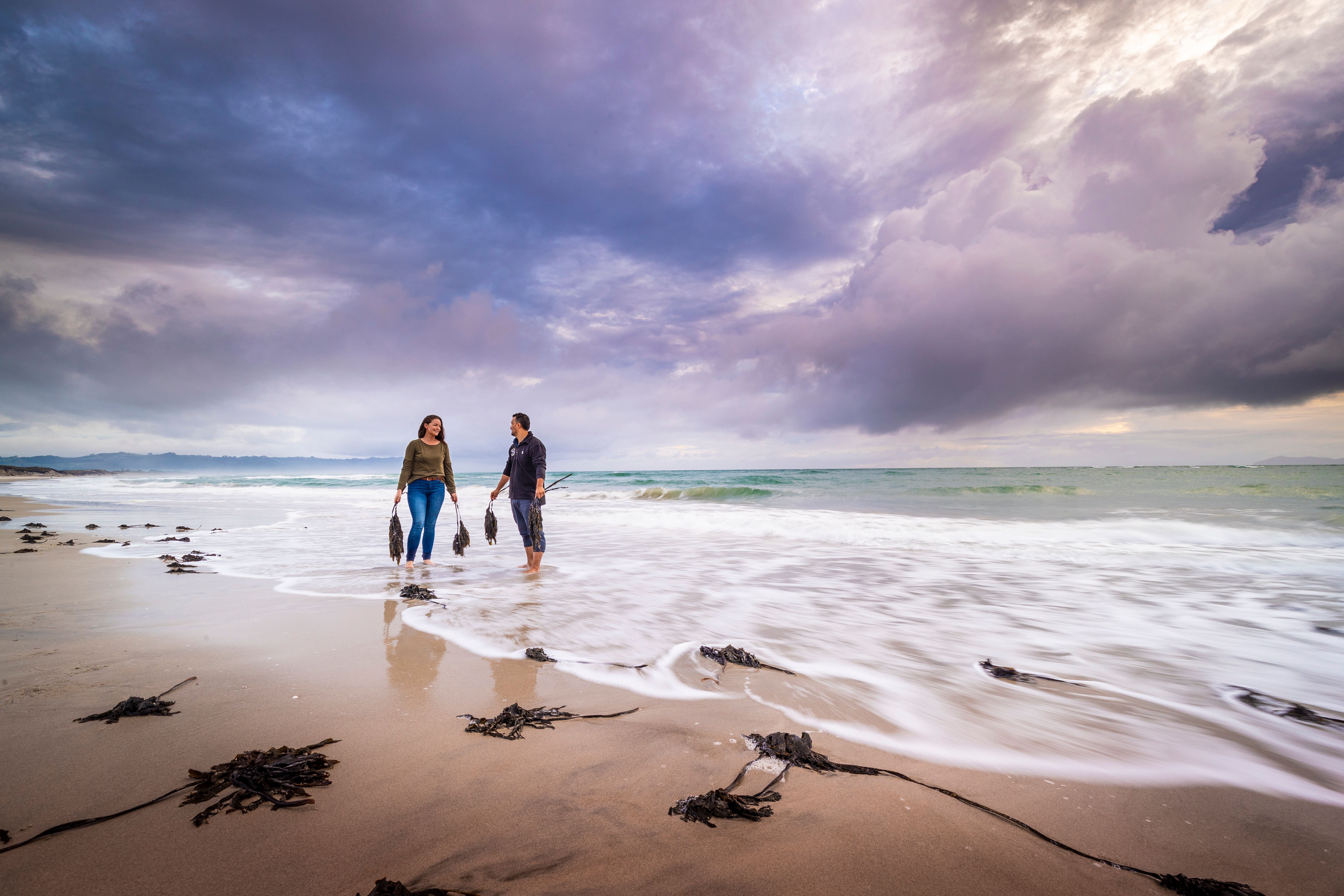According to oral tradition passed down over generations, in around AD 1000, Kupe was a sailor and fisherman living on the idyllic island of Hawaiki. Dwelling in the harbour was a great octopus – Te Wheke-a-Muturangi – who was destroying Kupe’s nets and taking his fish.

Kupe
Kupe is the legendary Polynesian navigator who discovered Aotearoa New Zealand. A thousand years ago, he made an epic journey from the eastern Pacific across the ocean to a new land. Kupe is a figure integral to many Māori narratives and histories, and a significant cultural icon.

“He ao! He ao! He aotearoa!” “It is a cloud, a cloud, a long white cloud!”
Kupe decided to pursue the great creature and kill her once and for all. With a crew of men and women to help him, including his wife Kuramārōtini, he prepared his waka Matahourua.
Sensing the attack, Te Wheke set off, with Kupe and his crew leading a dramatic chase. As they moved further and further across the seas, Kupe could catch only glimpses of Te Wheke’s hulking shadow far ahead, teasing and taunting him.
Before he knew it, Kupe and his crew were in strange and unknown waters. Te Wheke had led them deep into Te Moana-nui-a-Kiwa, the Pacific Ocean.
Many days and nights passed. Kupe used the stars and ocean currents to guide him and his crew. They were growing weary and hungry, not sure when their quest would end. Imagine their wonder and excitement when, on the far-off horizon, Kuramārōtini spotted something and cried out:
“He ao, he ao! He aotea roa!” – “A cloud, a cloud! A long white cloud!”
What she could see was Te Ika-a-Māui, the North Island of New Zealand, cloaked in white cloud.
Kupe first landed on the shores of the Hokianga Harbour. He named the area Te Puna o-te-ao-mārama – ‘the spring of the world of light’ – because of the light that reflected off the nearby hills.
But Kupe and his crew still had to defeat the great Te Wheke. They continued their chase, closing in, then cornered her in Raukawa Moana, Cook Strait. She lashed and thrashed, refusing to surrender, but Kupe leapt from the waka and struck her head with all his strength. At last, the great contest was over.
Kuramārōtini’s exclamation “aotea roa!” became ‘Aotearoa’, the name for the islands we also know as New Zealand.
When Kupe left Aotearoa New Zealand, he performed a ceremonial ritual in Hokianga Harbour, vowing never to return. He declared:
“Hei konei rā e Te Puna o te Ao Mārama, ka hoki nei ahau, e kore anō ahau e Hokianga nui mai” – “Farewell, the Spring of the World of Light. For I now return home and will never return.”
Before setting sail, he threw his son Tuputupu-whenua into the spring, where he turned into a taniwha (water spirit) to guide the safe landing of future arrivals.
Kupe’s discovery of Aotearoa inspired many other adventurers to follow him over the next few hundred years, in a fleet that included the great waka Tainui, Te Arawa, Mātaatua, Kurahaupō, Tokomaru, Aotea and Tākitimu. These vessels carried the first ever people to settle in New Zealand. Kupe and Kuramārōtini’s adventure, and their fearless pursuit of the new and unknown, discovered a new homeland for Māori – Aotearoa.
Kupe’s impact on Māori culture is profound. Many people trace their ancestry back to Kupe and his crew, and his voyages of discovery are still commemorated in various cultural practices and traditions. The story of Kupe and Te Wheke is equally an essential part of Māori narratives and has inspired many works of art, literature and music. There is a striking statue of Kupe and his crew on Wellington’s waterfront.
As well as his historical significance, Kupe’s achievements as a navigator are remarkable. He navigated vast stretches of the Pacific Ocean using knowledge of the stars, currents and winds – ancient wisdom, skill and expertise that is still celebrated and revered today.
Kupe’s story is also a stirring evocation of the deep connection that Māori have with the natural world, te taiao. The story of Te Wheke in part illustrates the importance of respecting and coexisting with nature, a value central to Māori culture and thinking.
The arrival of Kupe to Aotearoa is an important event for Māori. He represents the whakapapa, or genealogical anchor, and an ongoing relationship to the whenua, or land. Kupe is a prominent ancestor in the narratives of many iwi and a central figure in the foundation of Aotearoa New Zealand.
Explore the Legacy Project
.jpg)
Explore the Legacy Project
.jpg)
Explore the Legacy Project
.jpg)



.jpg)

